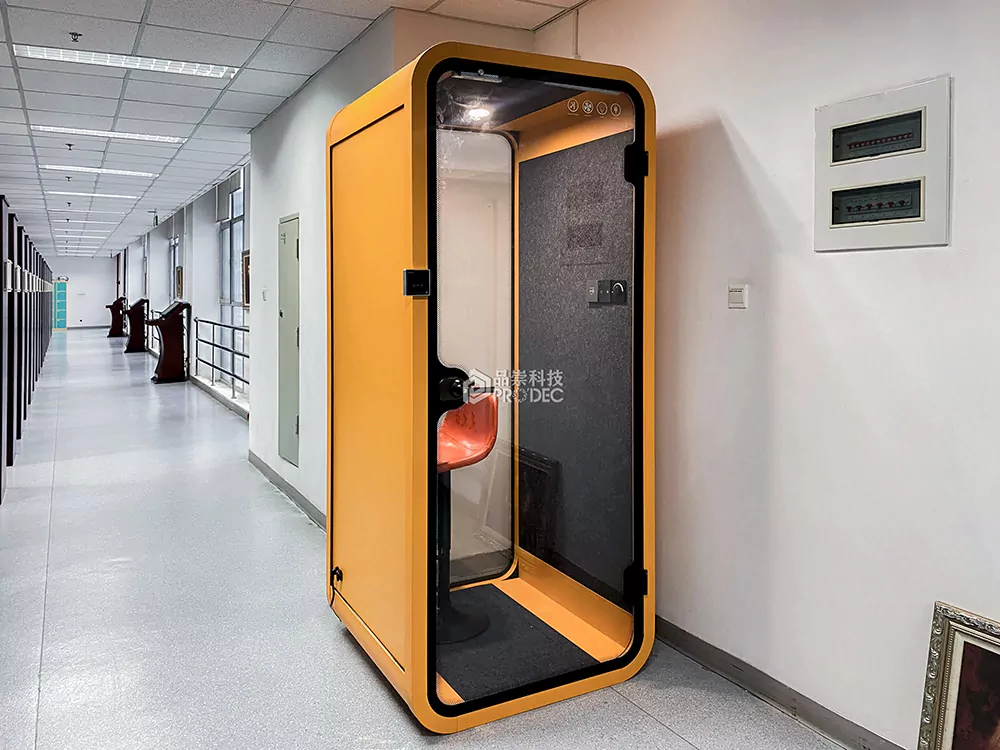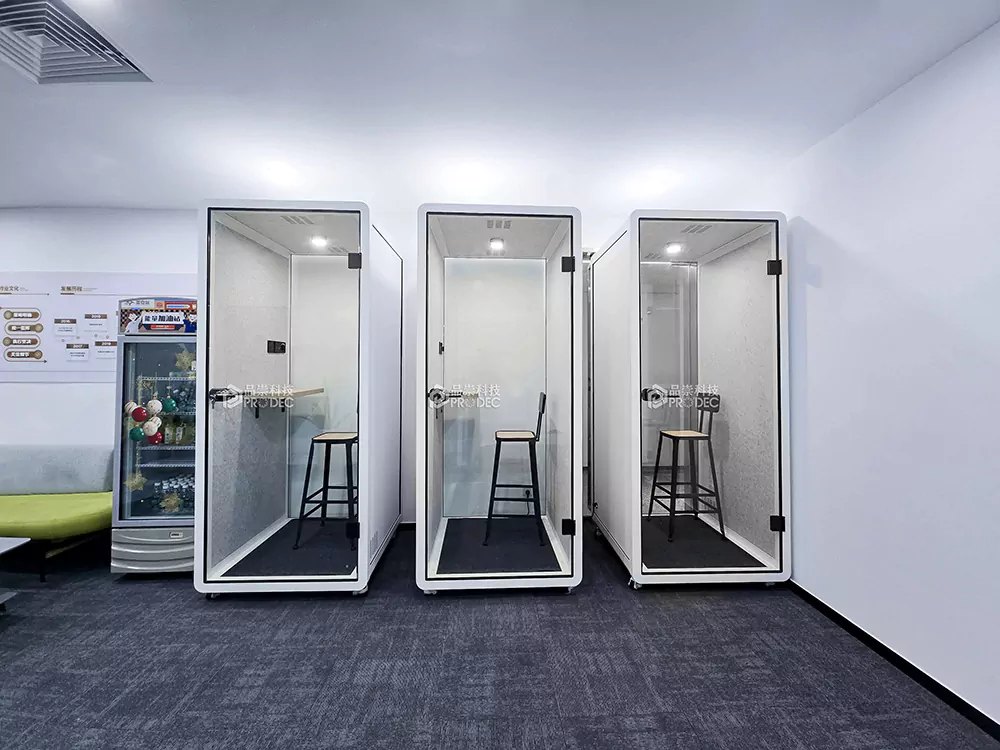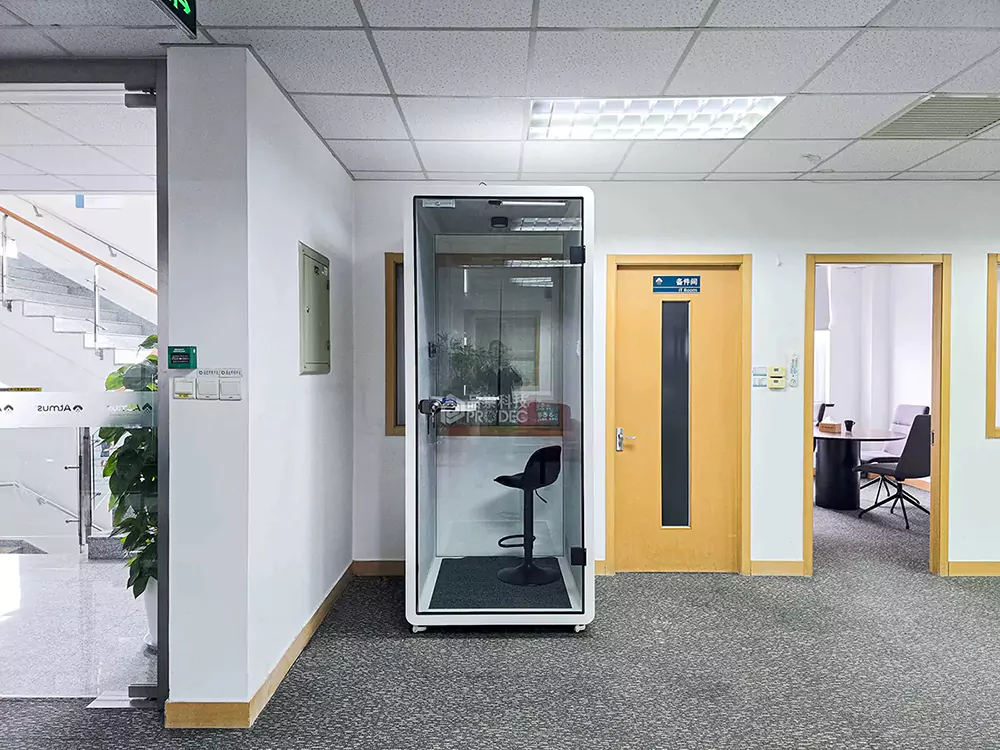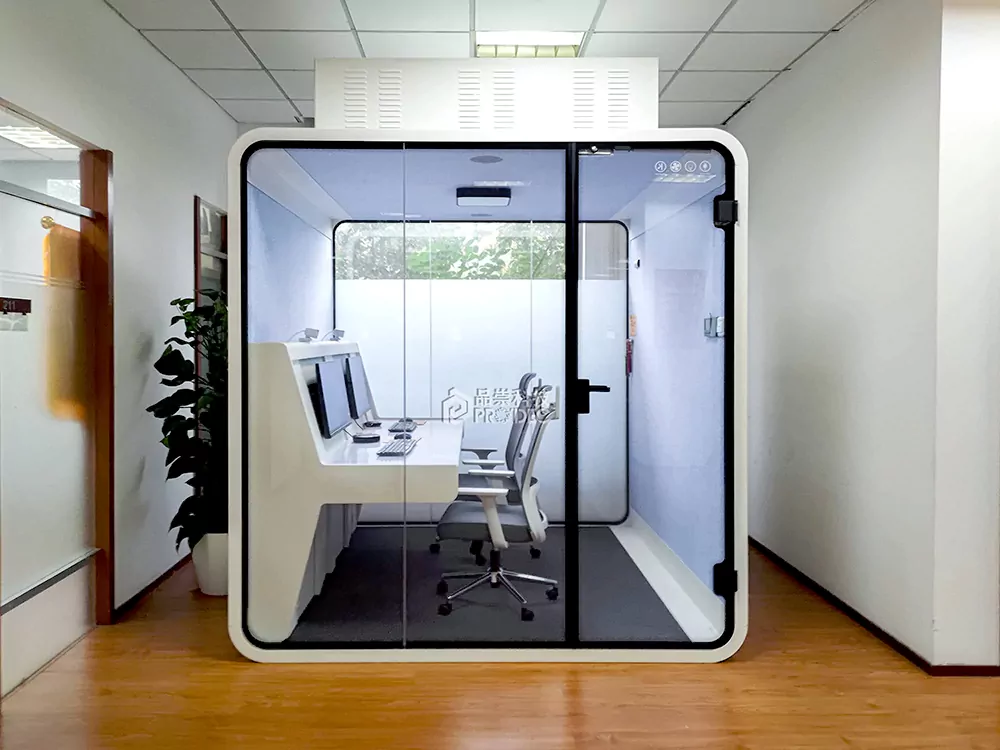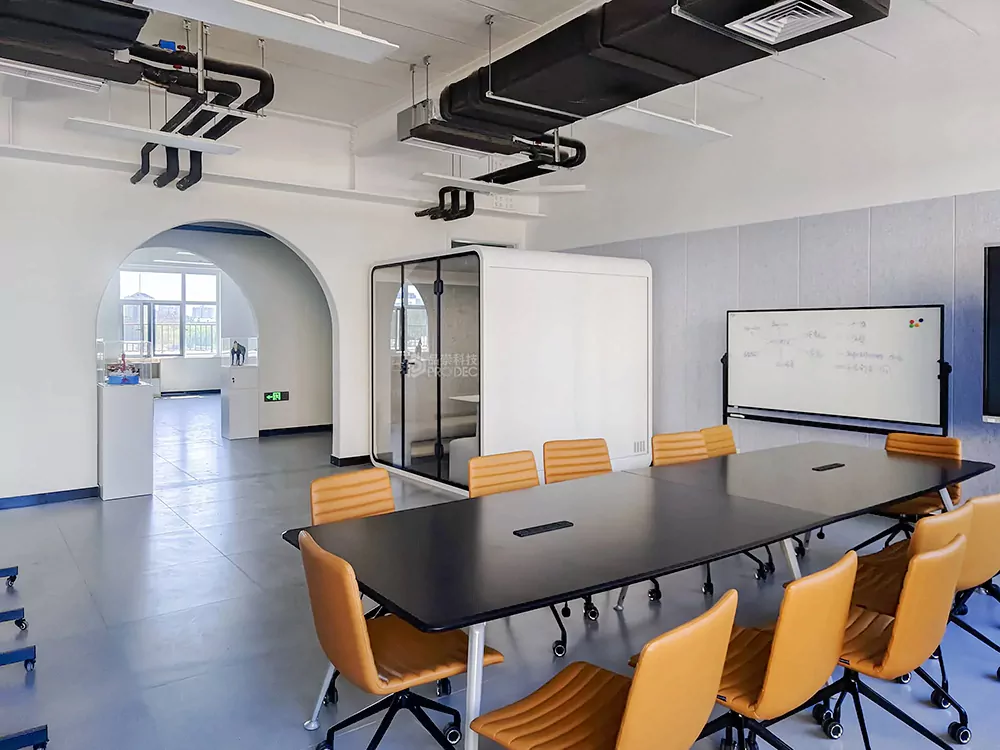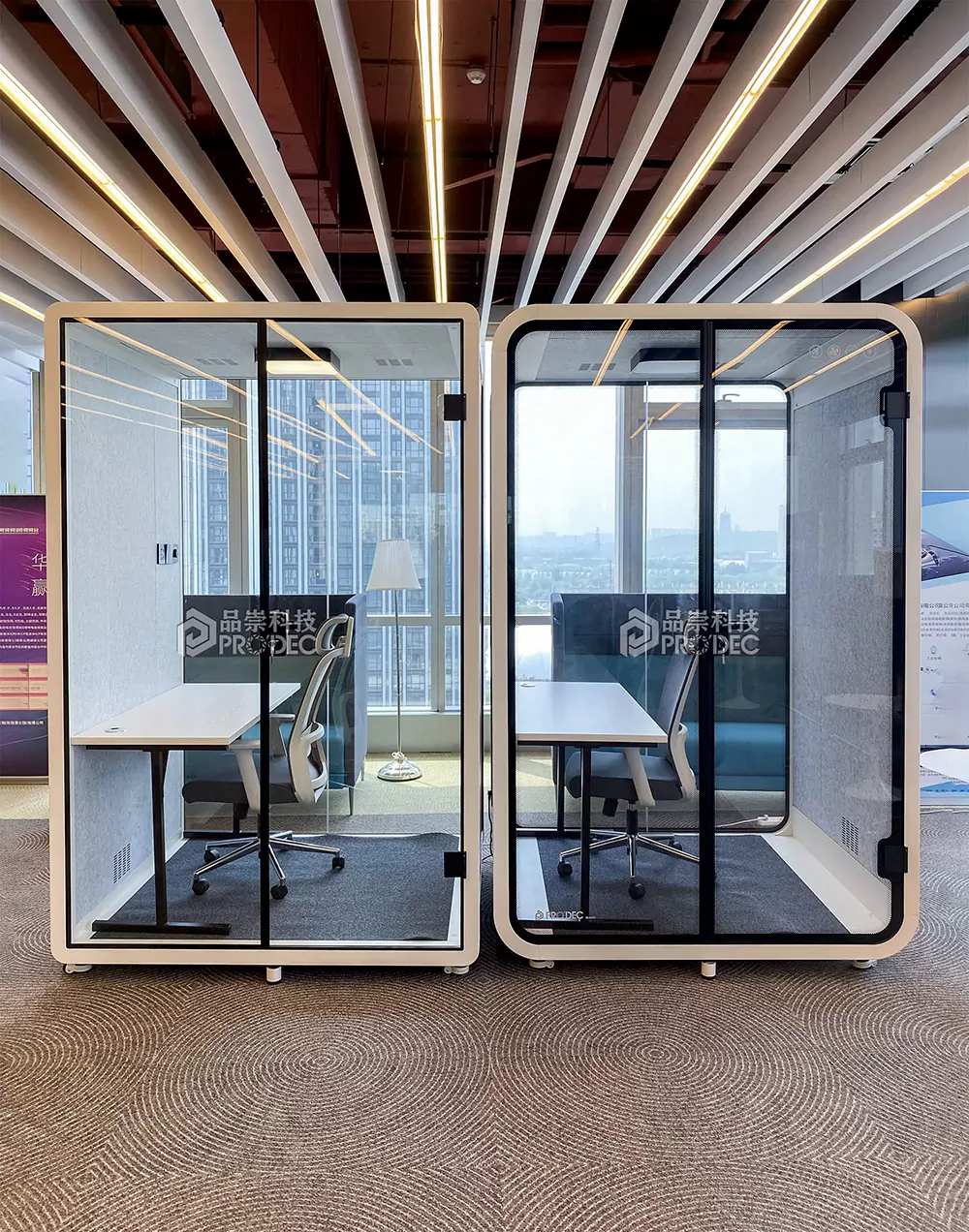لماذا تفشل المكاتب التقليدية في القوى العاملة الحديثة :حلول المكاتب المكتبية
In the era of hybrid and digital work, the traditional open-plan office—once seen as a symbol of collaboration—has become a major barrier to productivity. According to Gartner (2023), 73% of knowledge workers report productivity loss due to auditory distractions. The modern workforce demands flexible, quiet, and private spaces that support focus and well-being. This is where the office booth has become a game-changing solution.
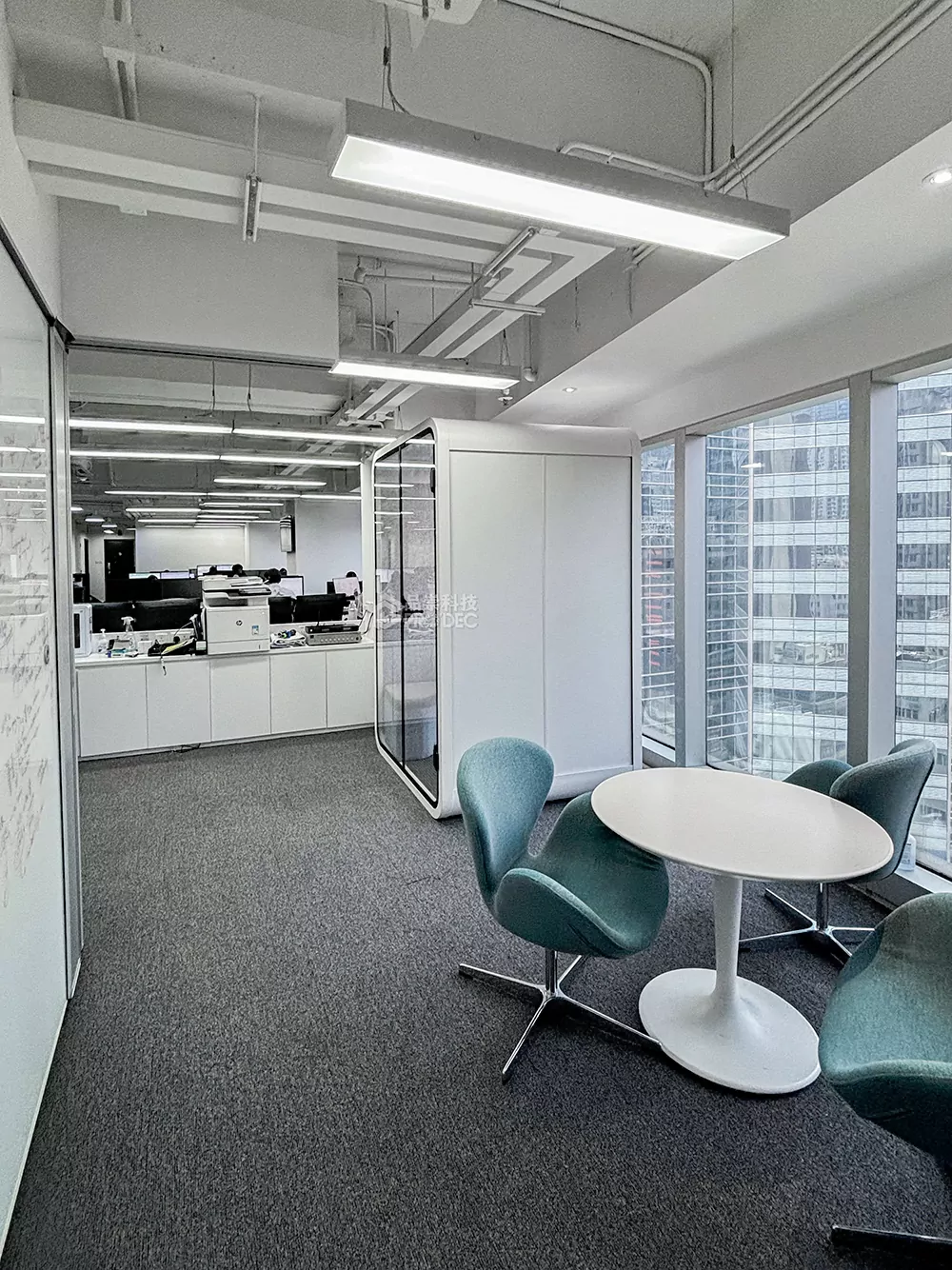
The Hidden Productivity Crisis in Modern Offices
The open office was designed to break down silos and foster interaction, but it has unintentionally created a new form of chaos. On average, noise levels in open offices reach 55 dB, well above the recommended 45 dB for focus work. Constant interruptions, overlapping conversations, and visual distractions significantly impair cognitive performance.
Furthermore, 89% of collaborative spaces lack adequate visual privacy, forcing employees to retreat to stairwells or hallways for confidential calls. At the same time, 38% of meeting rooms remain underutilized—occupied by just one or two people for tasks that could be handled in a private pod.
The solution? Integrating office booth systems that combine acoustic performance, ergonomic design, and energy efficiency.
Technical Comparison: Standard Cubicle vs. Office Booth
| Feature | Standard Cubicle | Premium Office Booth |
|---|---|---|
| Noise Reduction | 12 dB | 32 dB |
| Installation Time | 8 hours | 22 minutes |
| Air Changes per Hour | 4 | 18 with HEPA filtration |
This comparison highlights a significant performance gap. While cubicles provide minimal sound isolation, an office booth achieves up to 32 dB noise reduction, creating a near-silent environment ideal for calls, focus work, and online meetings.
The 10-Step Office Booth Implementation Framework
To maximize acoustic and operational benefits, leading organizations follow a structured deployment process. Below is a proven 10-step framework for integrating office booths into modern workspaces.
Phase 1: Acoustic Analysis
- Conduct Sound Transmission Class (STC) mapping across office zones.
- Use IoT noise sensors to identify peak distraction areas.
- Model sound reflections and reverberation times.
Phase 2: Ergonomic Configuration
Proper booth dimensions ensure comfort and usability for diverse user heights.
| User Height | Booth Height | Work Surface Depth |
|---|---|---|
| 5’5″–5’11″ | 86″ | 28″ |
| 6’0″–6’7″ | 94″ | 32″ |
This data-driven design ensures that every office booth accommodates ergonomic postures and supports extended work sessions comfortably.
Phase 3–10: From Installation to Feedback Loop
- Install booths in proximity to collaboration hubs.
- Integrate air circulation systems with building HVAC.
- Calibrate lighting to 4000K for balanced visibility.
- Implement acoustic door seals with magnetic closure.
- Establish digital booking and occupancy sensors.
- Conduct user satisfaction surveys.
- Analyze ROI through productivity metrics and energy savings.
Real-World Impact: From Distraction to Deep Focus
“Our focus time increased 63% after installing SoundGuard Pro booths.”
— Tech Lead, Fortune 500 Company
This testimonial echoes a growing trend among global enterprises—investing in office booths delivers measurable results. Employees regain control of their work environment, leading to improved morale, reduced burnout, and stronger engagement.
Advanced Ventilation Engineering: Comfort Redefined
عصري office booths are engineered with human-centered design principles. The patented VortexFlow™ ventilation system maintains a stable 19–21°C interior temperature and a 0.5 m/s airspeed. This achieves 28% better thermal comfort compared with ISO 7730 standards, ensuring users remain comfortable even during long video calls or focus sessions.
In addition, integrated HEPA filters remove 99.97% of airborne particles, supporting healthier indoor air quality—an essential factor in post-pandemic office design.
Energy Efficiency: Sustainable Workspaces of the Future
Sustainability has become a key driver in workplace design. Compared with traditional cubicles and small meeting rooms, office booths consume significantly less power.
| Model | kW/h | CO₂ Reduction |
|---|---|---|
| Basic Booth | 0.81 | 12% |
| EcoBooth 3000 | 0.34 | 41% |
This demonstrates how an efficient office booth strategy contributes to corporate sustainability goals without compromising comfort or performance.
The Science Behind Acoustic Wellness
Beyond productivity, the psychological benefits of quiet spaces are profound. Research from the Harvard T.H. Chan School of Public Health found that properly implemented office booths can reduce cortisol levels by 31% and increase task completion speed by 19%.
Quiet environments trigger deeper cognitive flow, enhance memory retention, and lower stress—factors directly correlated with long-term employee satisfaction.
Integrating Office Booths into Hybrid Work Strategies
The hybrid work revolution requires flexibility and adaptability. Employees alternate between home, coworking spaces, and corporate offices. To maintain consistency and focus, organizations must provide standardized micro-environments.
Deploying office booths across multiple locations ensures that every employee—regardless of where they work—has access to the same acoustic, ergonomic, and ventilation standards. This improves collaboration equity and employee well-being.
Cost and ROI: Small Space, Big Value
While the upfront cost of an office booth may seem higher than traditional cubicle setups, the long-term ROI is compelling:
- Reduced real estate cost: Each booth replaces multiple underutilized meeting rooms.
- Lower absenteeism: Better comfort and air quality improve employee health.
- Increased output: Average focus time increases by up to 60%.
Enterprises report full ROI recovery within 9–12 months, making office booths one of the highest-return workplace investments.
FAQs About Office Booths
1. What is an office booth?
An office booth is a compact, sound-insulated workspace designed for privacy, focus, or virtual meetings within open office layouts.
2. How effective is the soundproofing?
High-quality booths achieve up to 32 dB noise reduction, sufficient to block typical office chatter and phone conversations.
3. Do office booths require special ventilation?
Yes. Premium models include integrated fans or HEPA systems to maintain fresh air and comfortable temperatures.
4. Can office booths be relocated?
Absolutely. Modular booths can be disassembled and moved in under 30 minutes, making them ideal for flexible office spaces.
5. Are office booths eco-friendly?
Many modern designs use sustainable materials, low-energy LED lighting, and recyclable acoustic panels to minimize environmental impact.
Conclusion: Redefining Work for the Modern Era
Traditional office layouts are no longer compatible with today’s knowledge-driven, hybrid workforce. Excessive noise, lack of privacy, and wasted space all contribute to declining focus and rising stress.
The office booth represents the evolution of workspace design—where acoustic engineering, ergonomic comfort, and sustainability converge. Backed by research and validated through corporate adoption, office booths are not just a trend—they are the foundation of the future workplace.

